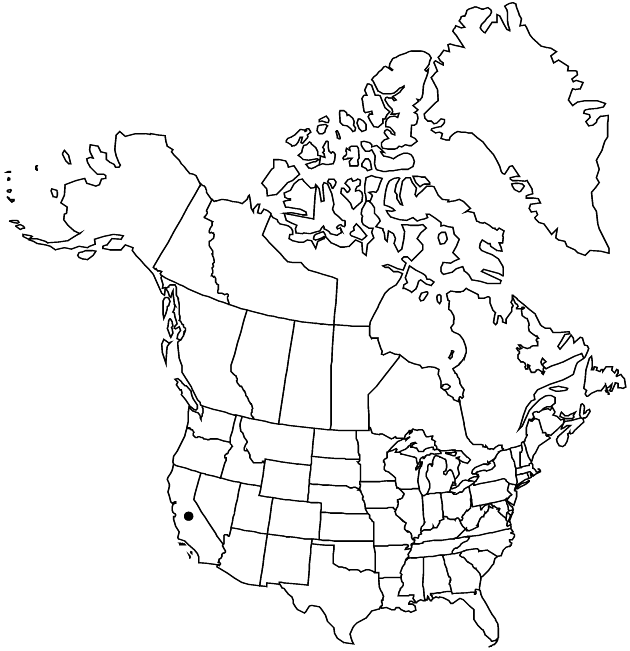Harmonia doris-nilesiae
Novon 9: 464. 1999.
Plants 9–40 cm; proximal unbranched portions of primary-stems shorter or longer than branches supporting heads. Leaves ± evenly distributed on stems. Heads usually erect in bud and fruit. Phyllaries 4–8, densely white-villous near folded edges. Ray-florets 4–8; laminae 2.5–7 mm. Disc-florets 8–20, functionally staminate. Ray cypselae strongly gibbous, beaked (beaks 0.4–0.5 mm); pappi to 0.9 mm. Disc cypselae 0; pappi (of disc-florets) of 7–10 lance-attenuate to subulate, plumose scales 0.2–0.9 mm. 2n = 18.
Phenology: Flowering May–Jun.
Habitat: Serpentine slopes
Elevation: 800–1600 m
Discussion
Of conservation concern.
Harmonia doris-nilesiae occurs in the southern Klamath Ranges. Sometimes, H. doris-nilesiae and H. stebbinsii occur in proximity (e.g., V. Parker 757, 759; JEPS); hybrids have not been reported.
Selected References
None.
